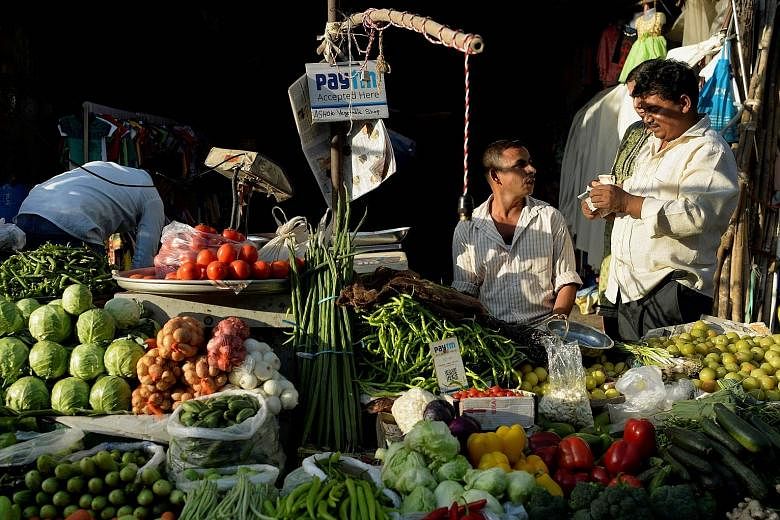Retired Indian diplomat Zikrur Rahman is most comfortable using cash.
But more than three months ago, he was forced to apply for a debit card and get an e-wallet account after Prime Minister Narendra Modi last November abruptly pulled 500- and 1,000-rupee (S$21.40) banknotes from circulation, leading to a nationwide shortage of cash.
The Reserve Bank of India printed new 500- and 2,000-rupee notes, but it was not fast enough and amid the chaos of long queues outside banks, Mr Rahman, like millions of other Indians, was pushed into adopting digital payment methods.
"I find it convenient to use (e-wallet) Paytm to pay for my prepaid mobile phone and other small amounts. But otherwise I have gone back to using cash. I don't use the debit card because they take transaction costs. I find it easier to go to the bank and withdraw money," Mr Rahman told The Sunday Times.
Since coming to power in 2014, Mr Modi has brought greater focus on pushing India's towards a digital economy. He has embraced initiatives like Aadhaar - the biometric identification system - and promised to connect 250,000 villages to the Internet. But it was demonetisation that has given the biggest push to a digital India.
"Demonetisation has given a one-time push to digital but there is more distance to cover," said Mr Madhur Singhal, partner, Bain & Company.
To sustain the momentum, the government needed to offer education and incentives to change people's behaviour, he said.
Months after demonetisation, Indians continue to be wooed by different payment methods.
A government-backed payment method called Bharat QR Code, where people can pay using a smartphone app to scan a machine-readable code, was launched last month. Another app called BHIM that allows bank account transfers has attracted 16 million subscribers within two months of its launch in December.
Private firms have continued to launch services.
Telecom firm Airtel launched mobile phone banking services, while Paytm, the largest among half a dozen e-wallets, is launching banking services that allow users to open savings accounts and use their phone to deposit and withdraw cash.
"Demonetisation has been a great trigger point for digital transactions... There is a lot of pull from the market, " Mr Kiran Vasireddy, senior vice-president at Paytm told The Sunday Times. Paytm, which has 200 million e-wallets, went from two and a half million transactions a day before November to about 8 million now.
But persuading Indians to give up cash remains tough.
In rural areas, banking infrastructure remains poor and internet facilities meagre. Financial illiteracy is a key problem, said experts.
"Eighty-five per cent of retail payment transactions in India still happen through cash," said Mr Naveen Surya, chairman of the Payments Council of India, adding that many Indians had no knowledge of digital transactions.
"For the first-time digital users, we need to educate them in a way that they don't get confused."
With cash coming back into the system, many have switched back.
Vegetable vendor Manoj Shah, 28, said most customers bought vegetables through Paytm at the height of demonetisation.
"Now only two madams still buy using Paytm. Everyone else has gone back to using cash," he noted while delivering vegetables to households in South Delhi.

